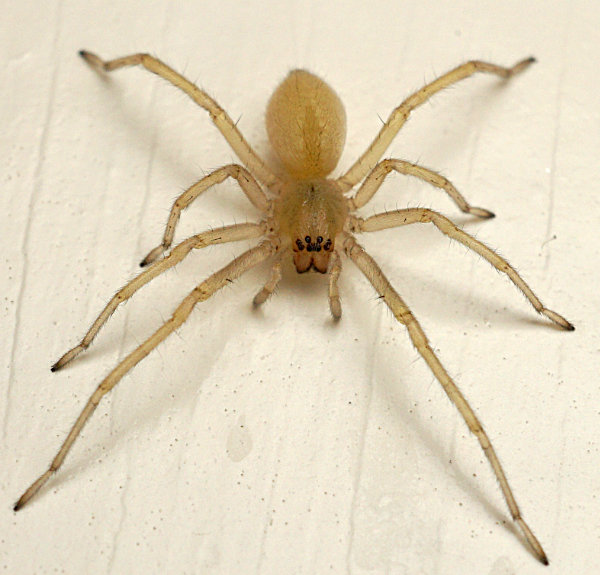Cheiracanthium sp

I found this spider inside the house the other day and managed to get a picture showing the 8 eyes. In case you were wondering what it is like to be a bat, think about what it must be like to be a spider.
Spiders have simple eyes, as opposed to compound eyes like those of a dragonfly. Because the eyes are so small, they cannot have good resolution: Even if the eyes were diffraction-limited, their sensors would have to be roughly the same size as the cones in human eyes, for example, and there would be many fewer of them. (In photographic terms, all diffraction-limited F/4 lenses have the same resolution limit, but a longer focal-length lens affords more detail. This paper by Haldane notes that an eye is not very good until it reaches a certain size, but a colleague of mine has just pointed out that context matters and the spider does not need a better eye.)
According to the Wikipedia entry on spider vision , the two central eyes in the lower bank are the principal eyes, and they do their best to form an image, but the pixels (if you will) are nowhere near the focal point. The spider is thus dreadfully nearsighted, though he must get some imaging due to the depth of field. The other, secondary eyes are used for light and motion detection, and, for example, polarization detection.
